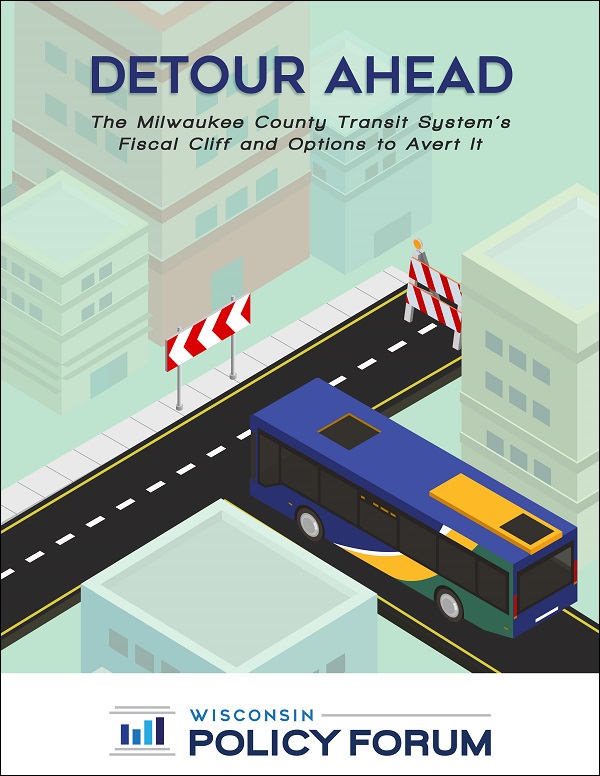The financial challenges facing the Milwaukee County Transit System (MCTS) have been well-documented in numerous reports by the Wisconsin Policy Forum over the past several years. In fact, as far back as 2008, in Milwaukee County’s Transit Crisis: How Did We Get Here and What Do We Do Now?, we warned that the financial outlook had grown so grim that devastating service cuts appeared imminent without prompt action:
Policymakers face a stark choice. They can accept a transit system that is a shell of its former self – one that contains no freeway flyer service, few night and weekend options, and sparse service west of 76th Street, south of Oklahoma Avenue or north of Silver Spring Drive – or they can consider one or more selections from a difficult menu of policy options that could either delay the day of reckoning…or perhaps prevent it altogether.
Remarkably, as explained in several subsequent WPF budget briefs and reports, that day of reckoning has largely been delayed – the result of a combination of good fortune, shrewd management, and the imposition of a $30 vehicle registration fee (VRF) in 2017.
The good fortune included the county’s receipt of federal stimulus funds in 2009 to purchase new buses, as well as MCTS’s receipt of tens of millions of dollars of reprogrammed federal funds from defunct light rail and commuter rail projects. Shrewd management included the restructuring of certain high-ridership routes to allow federal Congestion Management and Air Quality (CMAQ) funds to temporarily pick up their cost and the purchase of fuel at relatively low prices in futures markets. Yet, despite those developments, a controversial $30 VRF was still required in 2017 to avert severe service cuts that year and beyond.
More recently, MCTS’s receipt of $191 million in federal pandemic relief monies has allowed it to plug severe budget holes created by an initial huge drop in ridership, as well as to build reserves for future bus purchases. The federal money is thought to be sufficient to largely allow for the maintenance of existing service levels through 2024, despite the failure of passenger revenue to come close to fully rebounding.
The bad news is that deep structural problems that have been masked by the federal relief funding are certain to re-emerge. As we stated in our 2023 Milwaukee County Budget Brief, “unless ridership rebounds beyond expectations or additional infusions of state aid arrive in the next state budget, MCTS faces a frightening scenario when the federal funds are exhausted” by 2025.
WPF has not conducted an in-depth review of the nature and scope of MCTS’s funding crisis and explored the full range of revenue and service-reduction options since our 2008 report. In this report – commissioned by the Milwaukee County Department of Transportation – we cover both of those elements and assess the future of Milwaukee County’s transit services in a post-pandemic world. Our specific research questions include:
- What is MCTS’s current financial outlook, how has its fiscal prognosis changed over time, and why?
- What is a sustainable level of annual operating funding for MCTS under its current route and service structure?
- What are the pros and cons of various revenue options, including local option sales and fuel taxes that would require state approval, a locally-approved VRF expansion, and others?
- Overall, what types of actions will be needed for Milwaukee County to create a financially sustainable transit system that will meet the needs and expectations of its residents?
While Milwaukee County has made substantial progress in addressing its overall fiscal challenges in recent years, the structural hole facing its transit system remains one of its thorniest. We hope that this report will provide policymakers and the public with an independent and reliable source of analysis that will accurately size up the problem and drive decision-making as the anticipated fiscal “cliff” for MCTS approaches in 2025.


